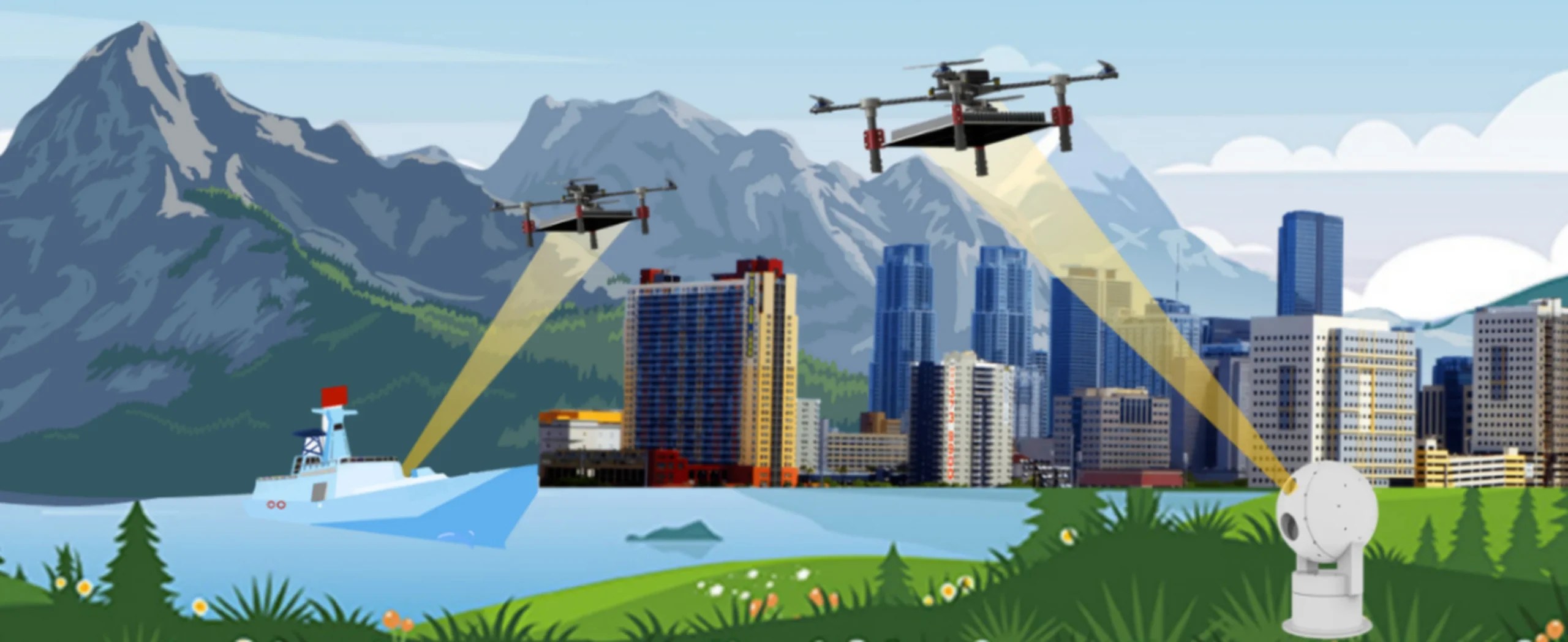A team of Chinese researchers from Northwestern Polytechnical University (NPU) has successfully powered a drone using high-energy laser beams, effectively keeping it in the air “forever.”
Ironically, this is also one of the rare instances where Directed Energy Weapons (DEW) like lasers, usually used in anti-drone systems to bring down unmanned aerial vehicles (UAV), are purposed towards keeping them afloat.
The technology has significant military applications and potentially revolutionizes how drones are designed and used in warfare and for civilian applications.
The elimination of an onboard power source because of the wireless energy transfer frees up space for many other systems with various applications.
But most importantly, the nearly 24-hour endurance offers limitless options and flexibility in areas like disaster management, traffic management, and search and rescue during floods, landslides, and avalanches.
Next Stage In Wireless Transmission Of Energy?
The South China Morning Post (SCMP) reported the development by the team led by NPU’s Professor Li Xuelong, who decided to approach the “drone-laser relationship from another angle.”
They sought to fit a drone with a photoelectric conversion module (or a solar panel) that converted light energy into electricity and used a high-energy laser beam to track and power it remotely.
“The team from NPU’s school of artificial intelligence, optics, and electronics said a recent experiment had successfully combined the autonomous charging process with intelligent signal transmission and processing technology – demonstrating the unlimited endurance potential for optics-driven drones (ODD),” the SCMP report said.
The experiment achieved a “24-hour intelligent vision tracking system and the autonomous long-range energy replenishment for ODD,” according to a statement posted on the team’s official WeChat account last week.
To overcome the first challenge of being able to track the drones while the drones are airborne, the team developed a tracking algorithm. This code was based on intelligent visuals to follow and accurately predict ODD targets while they flew.
The algorithm reasonably withstood the problems faced by illumination, scale, and rotation, was robust in different environments, and precisely tracked the exact positions of the drones.
But the next phase was the highlight. To increase the range at which power could be transmitted wirelessly, the scientists needed to reduce the “attenuation” a traditional laser beam undergoes in the atmosphere.
They introduced an adaptive beam-shaping technology that could autonomously adjust its intensity. Put differently – the team overcame the problem when obstacles like air turbulence and atmospheric conditions like density or smoke obstructed the laser. It can be safely said that the intensity of the laser beam can be increased or decreased when faced with such obstacles.
This improves the effectiveness and reliability of long-distance laser energy delivery. A protection algorithm was also added to the system, which automatically regulates the laser’s intensity to a safe range once an obstacle is detected in the beam’s path.
However, details regarding the system’s range and photoelectric conversion efficiency have been withheld, given its military utility.
A computer-generated image in the report suggested an ODD could fly as high as a skyscraper. The system was flown in three field tests: indoor follow-up flight, outdoor daytime flight, and outdoor night flight. The drones operated successfully in all scenarios.

Similar To A British System
A similar system being developed by the UK, reported previously by the EurAsian Times, was also based on the same principle but focused on laser-based control rather than energy transmission.
The Free Space Optical Communications (FSOC) by the UK-based technology and defense aerospace company QinetiQ involved a ground-based operator controlling a UAV.
It sent control commands and received sensor and platform information through the Free Space Optical Communications (FSOC) – a bi-directional link in its ground control and communication system.
This came against the backdrop of reports about Russian Electronic Warfare (EW) successfully jamming and bringing down many UAVs used by Ukraine. The vulnerability of drones like the Turkish TB-2 Bayraktar was bared when EW systems could easily sever the radio communications/control links connecting the UAV and the ground control or jam satellite navigation signals.
The British technology’s laser control signal transmission nullified such Counter-Unmanned Aerial Systems (C-UAS) as they operated in an RF spectrum. The Chinese autonomous ground-to-air wireless charging could also be paired with the achievements in drone swarm controls by the China Electronics Technology Group Corporation since 2020.
But like the UK system, the report about the NPU technology does not mention whether the ground-based laser energy transmission platform needs to be within a line-of-sight distance from the drone, its portability, and weight.
It likely presents a significant handicap, especially in military applications, as the ground system must always be close to the drone. Neither is there any clarity about the power source for the laser itself, as lasers need significant electricity.
Although in a nascent stage, it appears to be a promising technology and would need a lot of refining.
- The author can be reached at satamp@gmail.com
- Follow EurAsian Times on Google News




